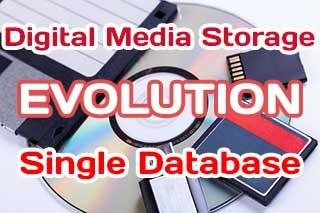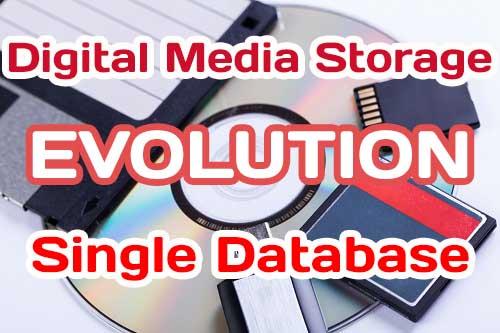 Perhaps the first and simplest digital media management solution is a set of files in an individual computer directory, which can be called directory managed media. This kind of storage and management needs the knowledge of the users to find and access the media. This kind of storage and access is, and will be, used to store digital media, even today, for small collections of media. This kind of storage depends on the individual users and computer operators to manage the data correctly, such as backing up the data. This kind of storage is typically used for temporary storage or work in progress.
Perhaps the first and simplest digital media management solution is a set of files in an individual computer directory, which can be called directory managed media. This kind of storage and management needs the knowledge of the users to find and access the media. This kind of storage and access is, and will be, used to store digital media, even today, for small collections of media. This kind of storage depends on the individual users and computer operators to manage the data correctly, such as backing up the data. This kind of storage is typically used for temporary storage or work in progress.
This simple kind of storage was moved to networked computers so that the media could be stored or accessed by a number of users. In time these computers were increasingly managed by operators rather than individual users.
One obvious limitation of directory managed media is the limitation of information about the image, or image metadata, that is available. The only metadata available is the directory structure, the file name, and file date/ time. Other metadata might be available in the media itself, but it could not be used to locate the media.
Indexes were created to overcome the metadata limitations of directory managed media. These indexes help users find media. These indexes could include as much metadata as needed for the particular application the user has in mind. These indexes are stored in individual files and may include metadata information from the media itself. In fact, many popular desktop search engines, such as those supplied by Google, use media metadata to find media on a desktop. Indexed solutions allow for descriptions and keyword searches.

The separation of metadata indexes and actual media data continued for a long time. The metadata indexes moved from flat files (heap, hash, B+- tree, and so on) to databases. These media metadata indexes were eventually put into purpose-built databases such as indexed sequential access method (ISAM) databases and relational databases.
This kind of management had different storage for index and media. For example, the media might be stored on a laser disk farm and the index on a magnetic disk. Many times different tools were needed to manage the media and index. Digital media management applications were built. Sometimes these were custom applications and other times these were special-purpose media applications. These kinds of systems are binary systems, where index and content are separated.
Eventually, the management of digital media was achieved using a single database infrastructure. This infrastructure is a database where both the media metadata and content itself is stored and managed.

